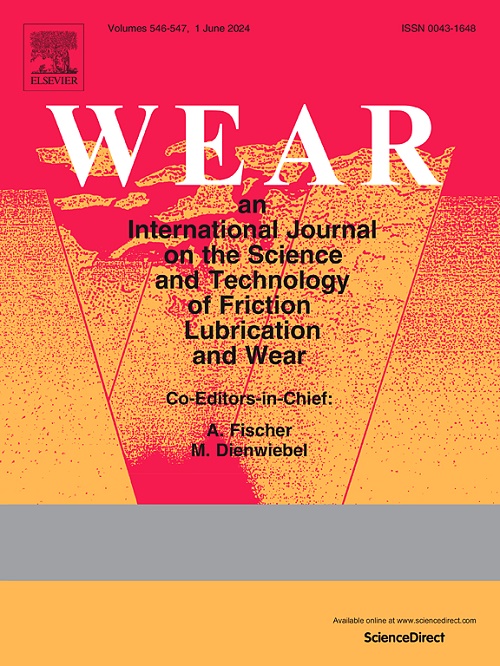Mo2B5涂层对铁基金刚石复合材料金刚石石墨化及切削性能的影响
IF 5.3
1区 工程技术
Q1 ENGINEERING, MECHANICAL
引用次数: 0
摘要
铁基金刚石复合材料的瓶颈在于铁极易催化金刚石石墨化,导致金刚石过早脱离,从而影响工作效率。本文在金刚石表面涂覆过渡金属硼化物(Mo2B5)。在复合材料烧结过程中,Mo2B5涂层与Fe发生一系列化学反应,形成抑制金刚石石墨化的界面层。通过砂轮磨损试验,研究了铁基基金刚石复合材料的磨损性能。结果表明,引入界面层隔离了金刚石与铁基基体之间的直接接触,大大降低了界面非晶碳的程度。界面石墨化程度的降低促进了金刚石与基体的界面结合,使复合材料的磨粒比提高了59%。介绍了一种新型的金属基金刚石复合材料界面改性涂层和方法,并对其影响界面非晶碳含量和复合材料磨损性能的机理进行了深入研究。本文章由计算机程序翻译,如有差异,请以英文原文为准。
Effect of Mo2B5 coating on diamond graphitization and cutting performance of Fe-based diamond composites
The bottleneck of iron-based diamond composites lies in the fact that iron is highly susceptible to catalyzing diamond graphitization, which leads to premature diamond detachment, thus affecting work efficiency. In this paper, a transition metal boride (Mo2B5) is coated on the diamond surface. During the sintering process of the composites, the Mo2B5 coating and Fe undergo a series of chemical reactions to build up an interfacial layer for inhibiting diamond graphitization. The wear performance of the Fe-based matrix diamond composites was examined by wear tests with grinding wheels. The results show that introducing the interfacial layer greatly reduces the degree of interfacial amorphous carbon by isolating the direct contact between the diamond and the Fe-based matrix. The decrease in the degree of interface graphitization promotes the interfacial bonding of diamond with the matrix, resulting in a 59 % increase in the abrasive ratio of the composites. This study introduces a novel coating and method for interfacial modification of metal matrix diamond composites, and the mechanism of its influence on the amorphous carbon content of the interface and wear performance of the composites is thoroughly investigated.
求助全文
通过发布文献求助,成功后即可免费获取论文全文。
去求助
来源期刊

Wear
工程技术-材料科学:综合
CiteScore
8.80
自引率
8.00%
发文量
280
审稿时长
47 days
期刊介绍:
Wear journal is dedicated to the advancement of basic and applied knowledge concerning the nature of wear of materials. Broadly, topics of interest range from development of fundamental understanding of the mechanisms of wear to innovative solutions to practical engineering problems. Authors of experimental studies are expected to comment on the repeatability of the data, and whenever possible, conduct multiple measurements under similar testing conditions. Further, Wear embraces the highest standards of professional ethics, and the detection of matching content, either in written or graphical form, from other publications by the current authors or by others, may result in rejection.
 求助内容:
求助内容: 应助结果提醒方式:
应助结果提醒方式:


